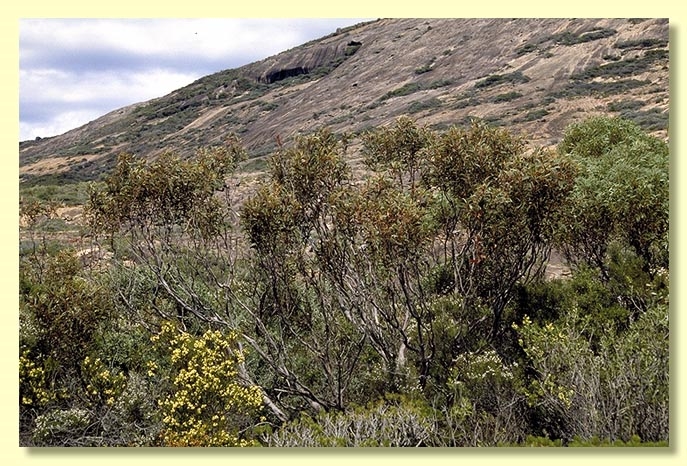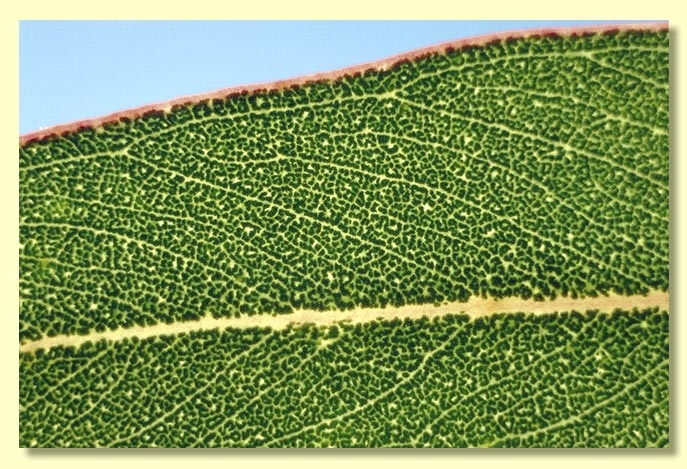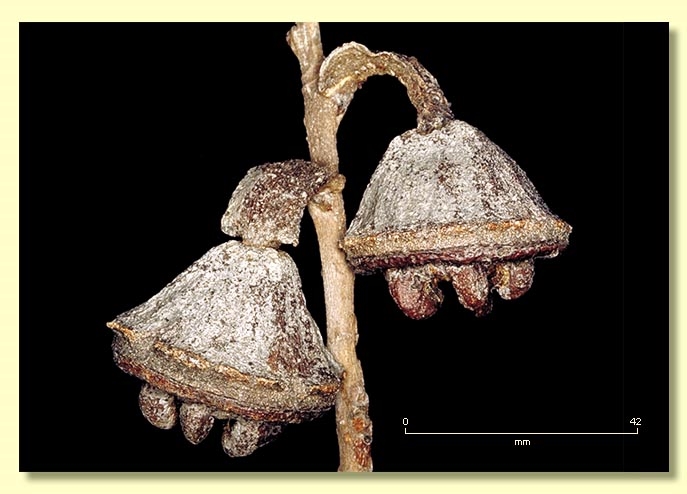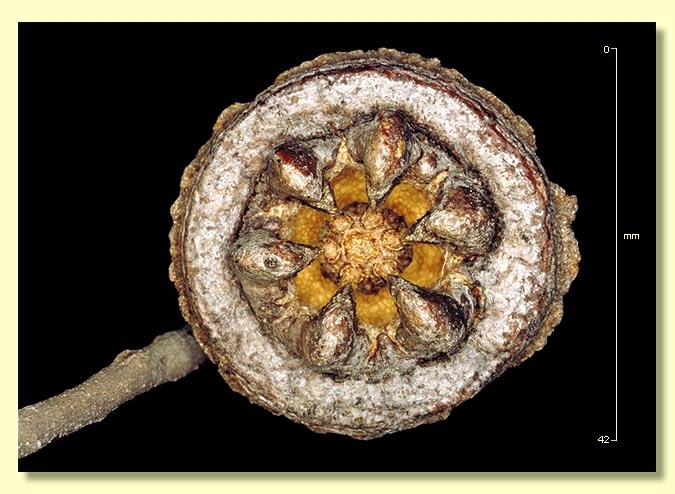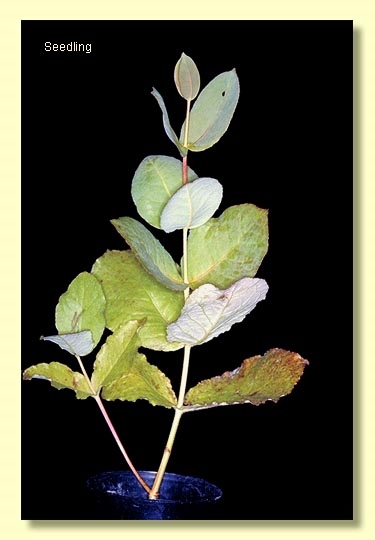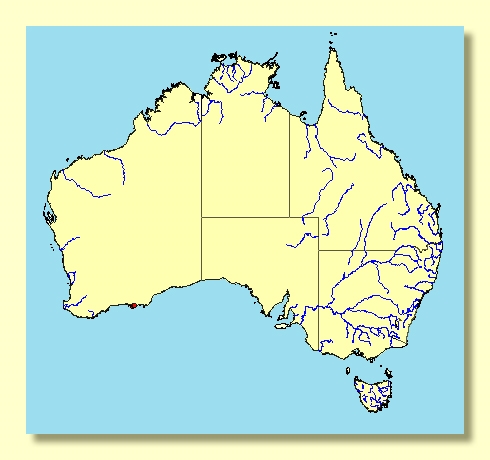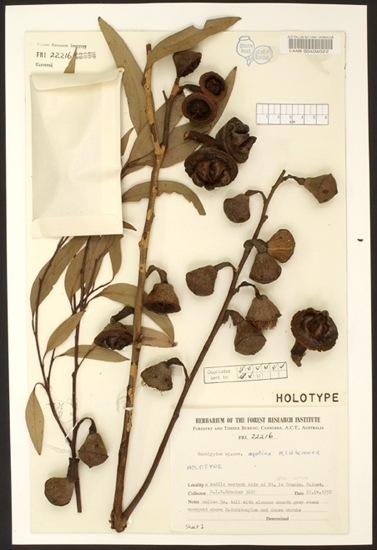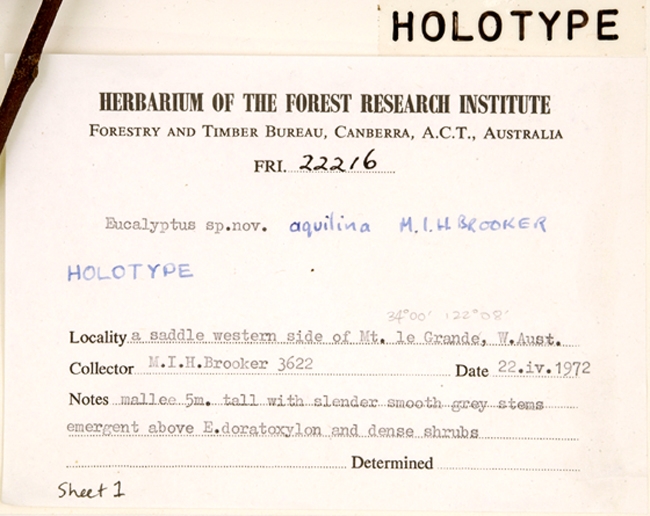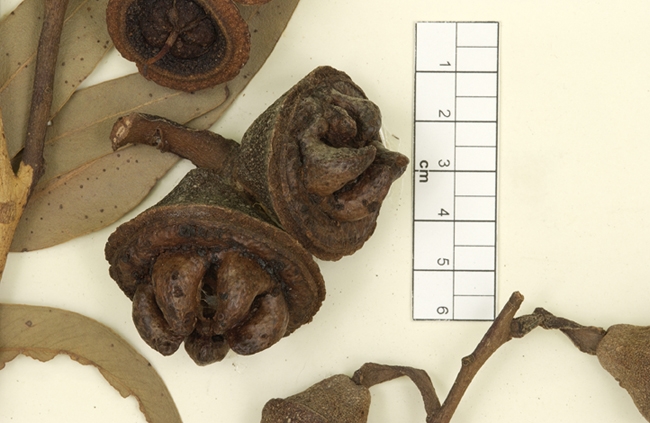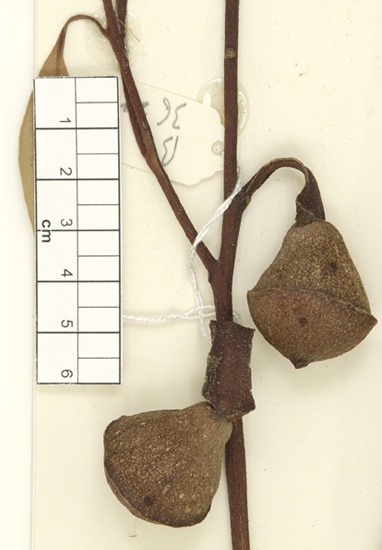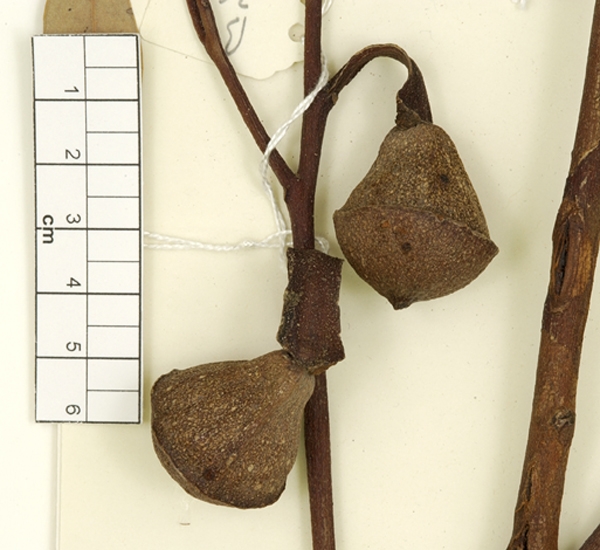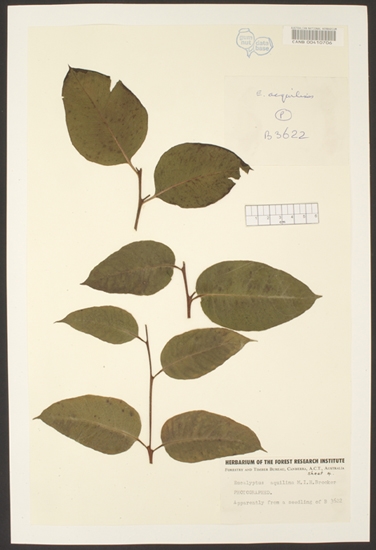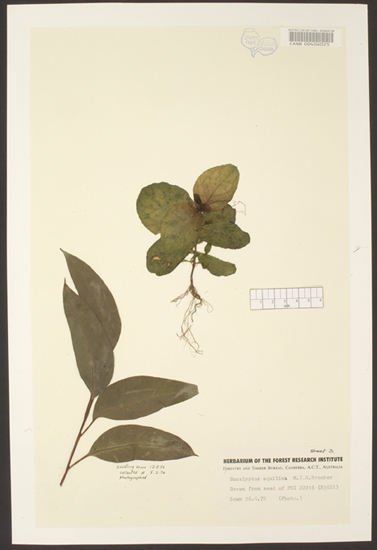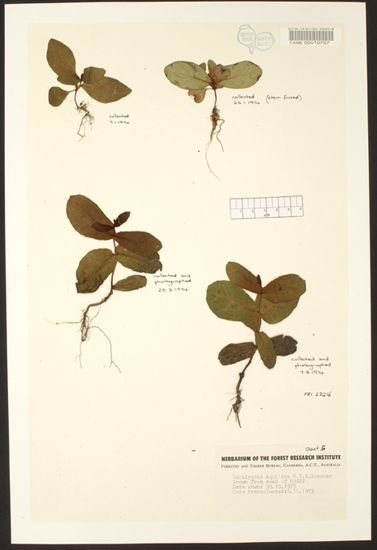Euclid - Online edition
Eucalyptus aquilina
Eucalyptus | Eucalyptus | Longistylus | Frutices | Preissianae | Glandulares
Bark smooth throughout, pale grey and white.
Branchlets lacking oil glands in the pith.
Juvenile growth (coppice or field seedlings to 50 cm): not seen.
Adult leaves alternate, petioles 1–2 cm long; blade lanceolate or becoming falcate, 7–13.5 cm long and 1.2–2.5 cm wide, base tapering to petiole or oblique, margin entire, apex pointed, concolorous, glossy, dark green, side-veins greater than 45° to midrib, reticulation dense, intramarginal vein close to margin, oil glands mostly intersectional and irregular (stellar blobs) plus a few round island glands.
Inflorescence axillary, single, peduncles broadly flattened, 1.2–3.5 cm long and rigidly down-curved or spreading to erect, buds 3 per umbel, sessile (rarely on pedicels 0.2 cm). Mature buds shortly and broadly ovoid to ± diamond-shaped, 2.8–3.2 cm long, 2.3–3.8 cm wide, scar absent (but beware—rim of bud may be mistaken for scar), operculum single, conical to rounded and apiculate, stamens mostly oblique and distally deflexed but always some irregularly disposed and flexed, filaments glandular, anthers cuboid, versatile, dorsifixed, dehiscing by longitudinal slits (non-confluent), style long and twisted apically or straight, stigma tapered, locules 5(–7), the placentae each with two vertical ovule rows. Flowers white.
Fruit on down-turned peduncles, sessile, broadly obconical, 2–2.9 cm long, 3.5–5 cm wide, rarely slightly ribbed, disc raised and lobed over the 5(–7) valves.
Seeds dark greyish black or blackish brown, 2.5–6 mm long, pyramidal to cuboid, dorsal surface smooth and often lacunose, ridged ventrally with hilum terminal.
Cultivated seedlings (measured at ca node 10): cotyledons reniform, large; stems rounded in cross-section, scabrid with rough warts; leaves sessile, opposite, amplexicaul for at least 10 nodes, broadly elliptical, 4–7.5 cm long, 2–4.5 cm wide, irregular due to marginal warts, the margins of lower leaves slightly puckered, green, glossy from the first pair.
Flowering has been recorded in June.
A mallee endemic to Western Australia, restricted to the coastal area east of Esperance. It is found in shallow valleys, creek beds and on hillsides in the Mt Le Grand, Frenchman's Peak and Thistle Cove areas; also on Sandy Hook Island. It occurs in dense heath.
Eucalyptus aquilina belongs in Eucalyptus subgenus Eucalyptus series Preissianae, a small group characterised by smooth bark, buds in threes, buds with a single operculum (hence no operculum scar), cuboid anthers that shed pollen by two separate slits, ovules arranged in two rows on the placenta, fruit that are large with the disc lobed over the valves and seed pyramidal to cuboid and seedlings with sessile, opposite leaves for at least 10 nodes.
There are 4 species in series Preissianae, E. aquilina, E. preissiana, E. coronata and E. megacarpa. The most divergent species is E. preissiana, which has brown seeds and yellow flowers, but one form, E. preissiana subsp. lobata, has fruit very similar to that of the white-flowered E. aquilina. E. coronata has strongly ribbed buds and fruit, whilst E. megacarpa has smooth buds, cupular to bell-shaped fruit and is often a tree.

